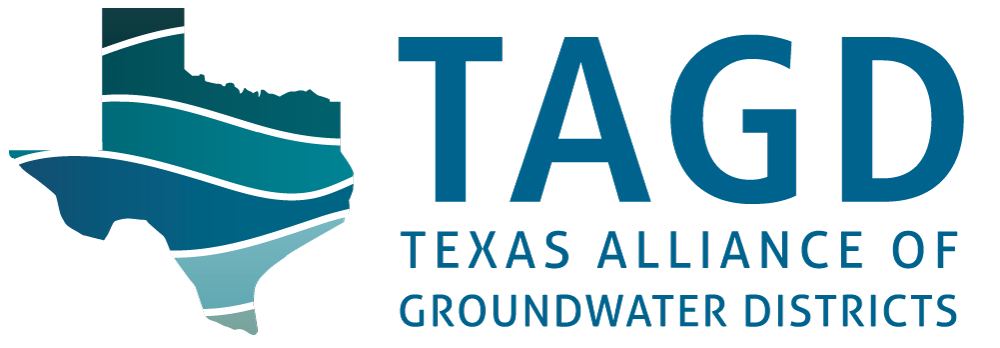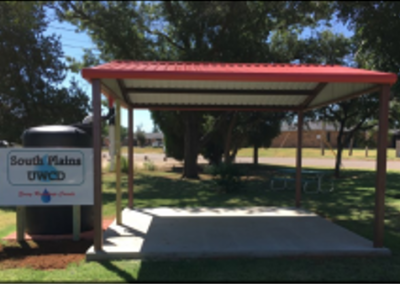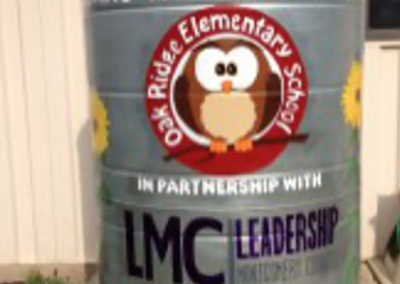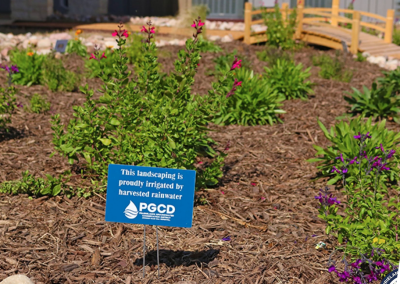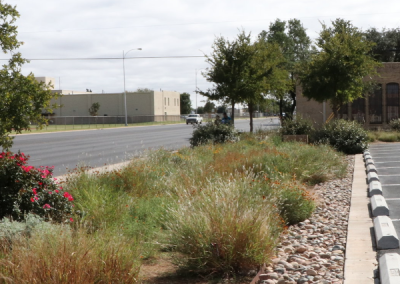From Drizzle to Downpours: GCD Rainwater Harvesting Programs
Published January 18, 2024 by Julia Stanford
Many areas of West Texas receive fewer than 10 inches of rain annually, while the eastern edge of Texas regularly sees over 50 inches per year. In 2017 when Hurricane Harvey parked over the bottom of the state, we were certainly wishing we could save that deluge of water for another (less rainy) day, like the devastating drought conditions of the last two years. While it’s not quite that simple, rainwater harvesting is a fairly straightforward method of capturing rain, typically from the roof of a building, that would otherwise run off into a basin or soak into the ground. That water can then be treated, if necessary, and used in place of fresh water. Whether an area receives a lot of rain or just a little, the inches can really add up and make an impact on water use. Captured rainwater can be used for small tasks like watering plants inside and outside the house, and also larger tasks like supporting the water needs of an entire household or business.
Rainwater harvesting is widely recognized as a valuable way to decrease demand on groundwater resources. In fact, groundwater conservation districts are statutorily required to address rainwater harvesting in their management plans (TWC Chp. 36.1071). For many districts this means simply including information about rainwater harvesting on their website or making literature available at the district office. Other districts take it a step further with more advanced educational opportunities or by offering funding towards rainwater harvesting in their jurisdiction. Below we’ve outlined some different ways that GCDs can support rainwater harvesting, along with a few examples.
Demonstrations
On first glance, visitors may wonder why some groundwater conservation district offices have beautiful landscapes – aren’t they supposed to be judicious with water instead of worrying about cultivating showy flowers? In most cases, these stunning displays are actually exhibiting water-saving measures like rainwater harvesting and xeriscaping, with little to no demand on water resources! Some demonstration gardens only have native or water-saving plants, but many incorporate some level of rainwater catchment as well, from rain garden design to giant cisterns.
For example, Prairielands GCD employs several catchment methods to minimize the district office’s impact on the environment and won a the Texas Raincatcher Award from the Texas Water Development Board in 2022. Between rain gardens to capture runoff and two metal cisterns, the district harvests an average of 80,000 gallons per year that is used to irrigate the native plant and pollinator garden. Learn more about Prairielands GCD’s rainwater harvesting setup and the Raincatcher award here. See a handful of other rainwater harvesting demonstrations below – and there are many more not represented here!
Education
Many GCDs educate the community about the benefits of rainwater harvesting. This can take the form of timeless content like pages on a website, social media posts, and printed handouts, or something with a specific audience and timeframe like an in-person or virtual class. Some districts partner with local vendors to conduct door prize drawings or giveaways as an incentive for people to attend the class and implement what they learn. Districts also find they have higher attendance when offering light bites and coffee for attendees, but a class can be as basic or as extravagant as a district wants. The scope can range from an hour-long introductory class to a full-day hands-on workshop. To the right you’ll see a photo of a recent Rainwater Harvesting 101 class at Post Oak Savannah GCD. During the pandemic the district was one of several to conduct webinar trainings instead of in-person classes to reach more attendees. The district also hosts a Rainwater Harvesting 201 class offering more advanced information on systems and how to irrigate with harvested rainwater, as well as classes on native plant gardening.
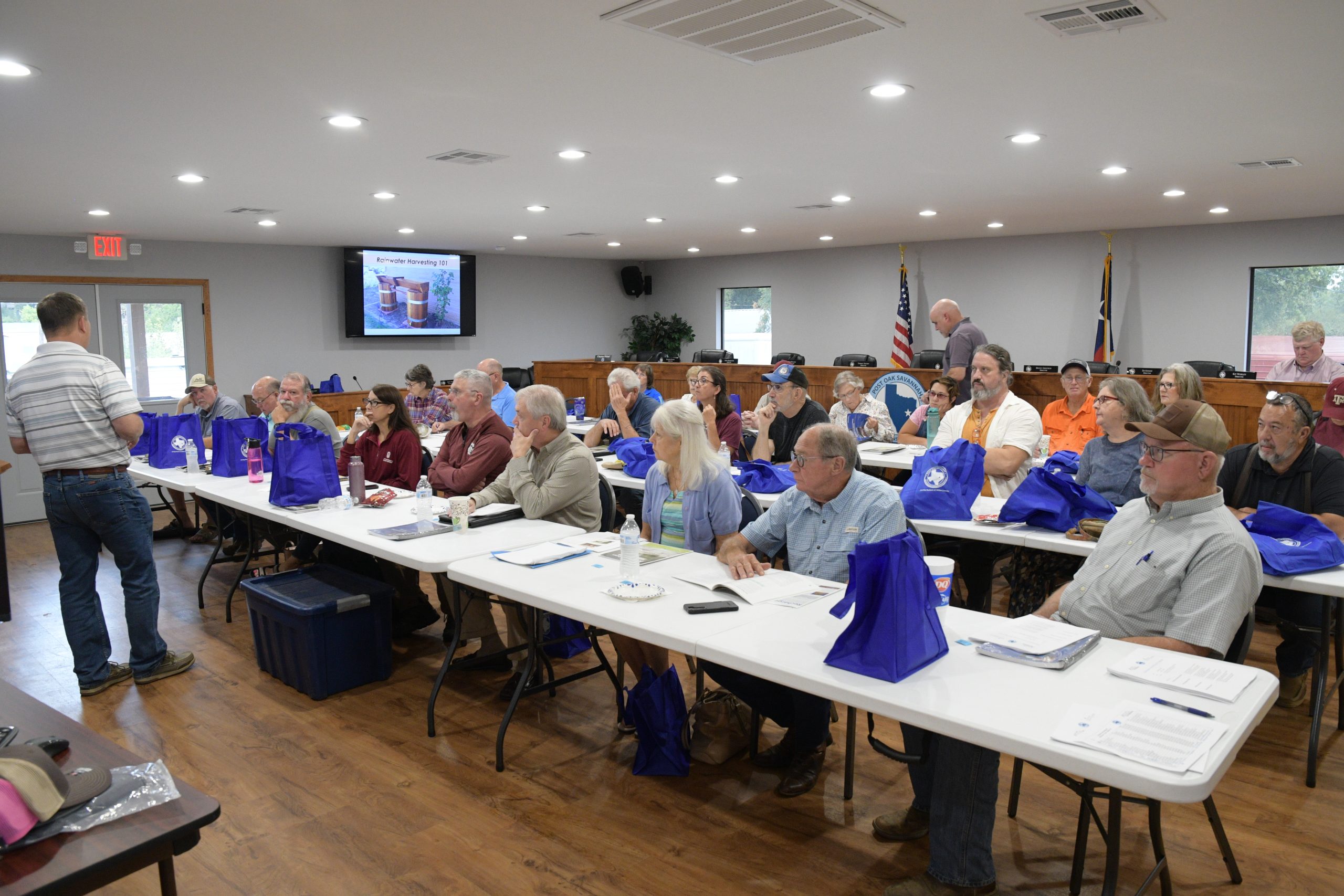
Rainwater Harvesting 101 workshop at Post Oak Savannah GCD
Hands-On Support and Funding
For those districts looking to get their hands dirty or put their money where their mouth is, extensive rainwater harvesting programs that help stakeholders overcome financial or technical barriers have the potential to make a big impact. Two examples of these robust programs are Upper Trinity GCD and Post Oak Savannah GCD. Both programs have budgeted funds to support rainwater harvesting in their respective districts. Upper Trinity GCD focuses on partnering with political subdivisions or nonprofit entities providing a public service (like chambers of commerce or volunteer fire departments), while Post Oak Savannah GCD’s rebate program is targeted more toward individual households with a maximum rebate of $5,000. Both district boards have approved guiding documents for their programs, including an application process, eligibility requirements, and scoring criteria. Upper Trinity GCD also provides technical assistance for developing a rainwater harvesting plan, and has offered this for several years before launching the grant funding program last year.
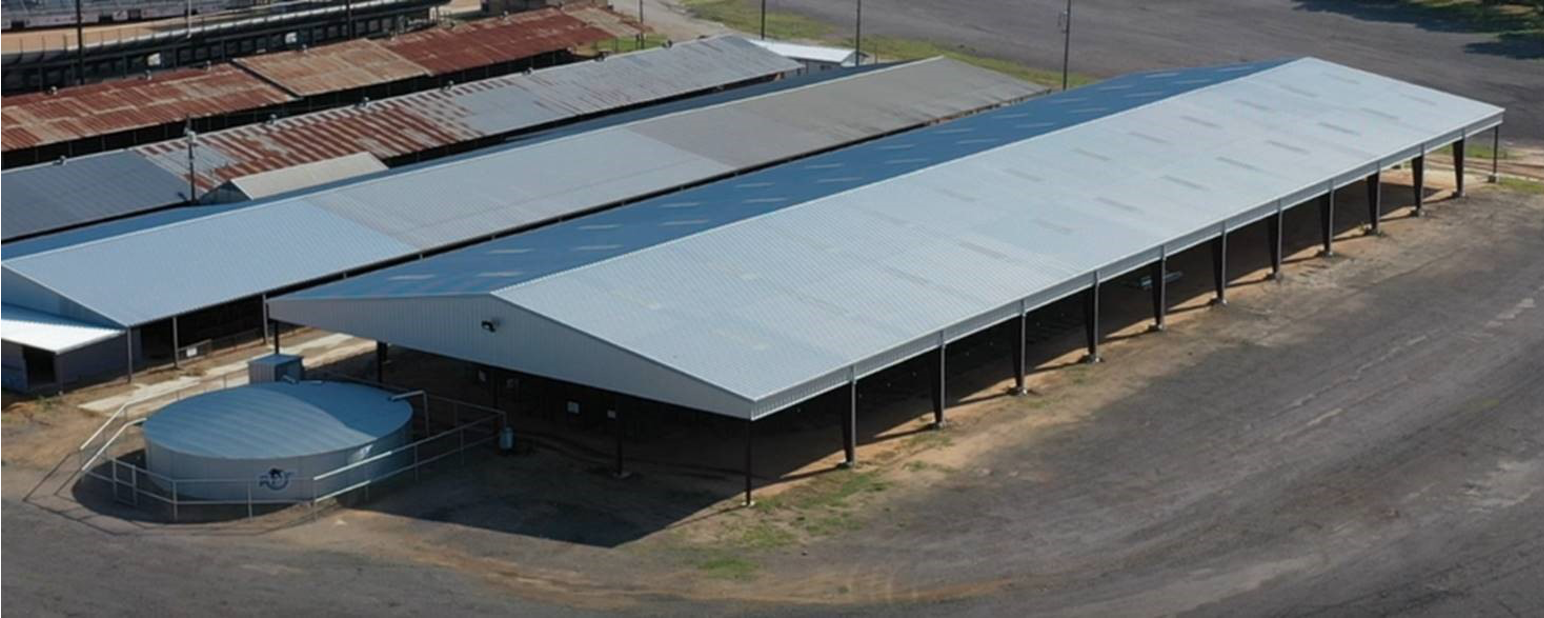
Left: A 65,000 gallon harvesting system at the Sheriff’s Posse fairgrounds in Weatherford, supported by Upper Trinity GCD. The project was completed in 2020 and was awarded the Texas Rain Catcher of the Year in the governmental category.
Other Incentives
Of all the laws that someone might find relevant to water conservation, one would likely not expect anything from the state tax code. However, certain sections of this code could offer financial relief to residents interested in rainwater harvesting. Texas offers a sales tax exemption on purchases of rainwater harvesting equipment and supplies. Anyone interested in taking advantage of this exemption must furnish a Tax Exemption Application Form 01-339 (second page here) to the supplier of the equipment.
For those GCDs that are funded through property taxes, another unique tactic to promote rainwater harvesting is issuing property tax exemptions for part or all of the assessed value of a property on which certain water conservation initiatives have been implemented. This provision is found in the Texas Tax Code, Chp. 11.32 and applies to “approved water conservation, desalination, and brush control initiatives” as designated by the taxing unit. While no GCDs currently offer such exemptions, any taxing entity can implement this. Hays County in Central Texas has a program in place – see the information and application packet here. Applicants are required to submit a project summary, site plan with detailed system design, detailed cost estimation with all capital outlays, and a firm project bid. The two-step application is processed by the county’s development services office and appraisal district. Property owners with over 2,500 gallons of rainwater storage may be deemed eligible for the exemption. The application must be renewed annually with documentation of any changes to the system.
More Information
With all these different ways to promote rainwater harvesting, groundwater conservation districts are leading the charge on water conservation. For more information on rainwater harvesting in general, check out the Texas Water Development Board’s page on rainwater harvesting here. For information specific to one area, contact your local groundwater conservation district.
Thanks to Adeline Fox and Jill Garcia for compiling much of this information in a presentation they delivered at the June 2023 TAGD Business Meeting. View their slides here.
